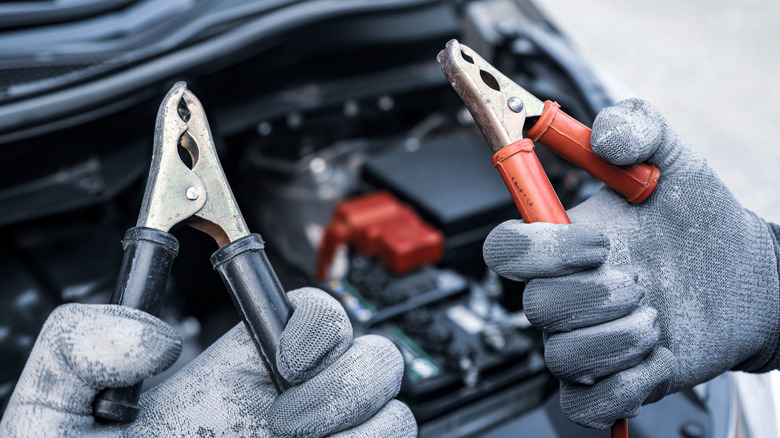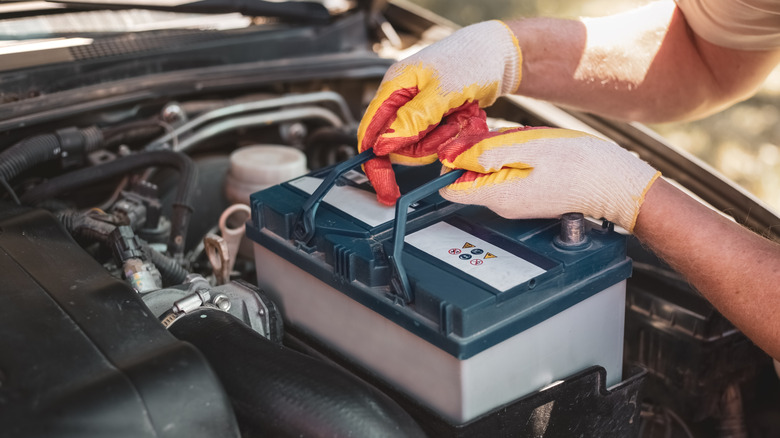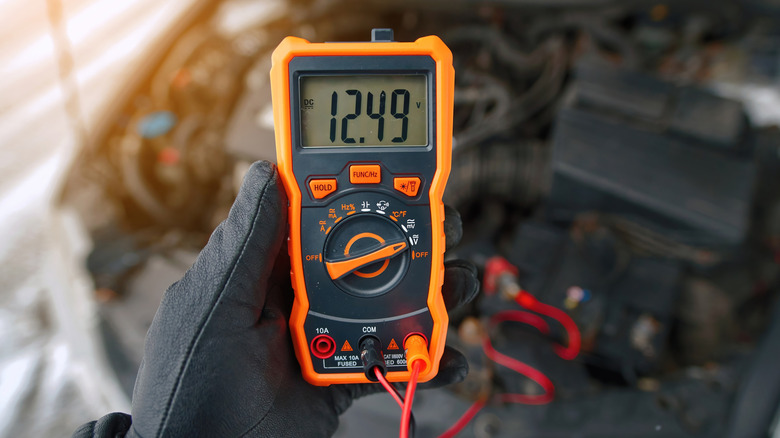It’s something most drivers will likely deal with at some point: you put your key in the ignition and turn it, only for the engine to struggle to start or not make a sound at all. In many cases, this is the result of the battery being in need of a jump to get going again. From here, the alternator — the component responsible for maintaining a battery’s charge – should be able to take over and keep the battery alive for the long haul, but what if it doesn’t? It could be a sign it’s time to replace your battery, or there may be something simple causing it to die overnight that needs to be corrected.
Advertisement
If you’re constantly jumping a battery, something like leaving your headlights or radio on, for example, overnight is likely to drain the battery significantly. This draining of the battery by the electrical system is known as parasitic draw, and if left unchecked, it can drastically shorten the lifespan of the battery. Thus, it’s key to remember to turn off these components before turning the entirety of the car off. Otherwise, over time, you may have to replace what could’ve been a fine battery sooner than usual. Ideally, you shouldn’t have to do much more than that.
As far as what could be causing you to have to jump your battery constantly, parasitic draw from electronics systems is just one of many culprits. Unfortunately, making sure your radio, headlights, and the like are turned off isn’t always guaranteed to remedy this issue.
Advertisement
The hidden causes of parasitic draw
If you’re dealing with a parasitic draw issue, yet you’re diligent about turning off the various electrical elements that could cause it, there’s likely a bigger issue to contend with. For one, there’s the matter of wiring that is old or has corroded. If these wires can no longer carry electricity correctly, they’re going to leak and drain your battery in no time. In a similar vein, a short circuit, where electricity is able to flow when and where it shouldn’t, can be to blame for parasitic draw.
Advertisement
Beyond wiring, there are several parts within your ride that could be malfunctioning, leading a battery to drain overnight, including the alternator, which will show a few signs of going bad, the starter motor, and the ignition switch, which could be drawing power from the battery even when the car is turned off. You could be looking at a relay problem as well. If any one of these potentially bad parts is left to its own devices, the parasitic draw will only continue.
Faults leading to parasitic draw can happen with just about any vehicle, and it’s important to keep an eye on them and take the right steps to solve them. Before going to the mechanic, though, you can do some at-home testing yourself.
Advertisement
How to test for parasitic draw on your own
Pinpointing the root of your vehicle’s parasitic draw can be difficult. That’s where a parasitic draw test can save you time, effort, and money, as it allows you to determine if you’re dealing with such a problem and what could be responsible. As if that wasn’t reason enough to give it a shot, it only takes a little bit of time and only requires a multimeter — one of the best hand tools you can buy from Amazon.
Advertisement
1. Park your vehicle, turn it and all lights off, along with the radio. If you drive a newer vehicle, give it around 30 minutes before starting the test. It takes time for the computer to turn all the way off, and you don’t want it to mess with your readings.
2. Remove the negative battery ground connector from the negative battery terminal.
3. Set the multimeter to the highest DC ampere setting, touching the negative prong to the negative terminal and the positive prong to the negative ground connector.
4. Access your vehicle’s fuse box. Remove and replace one fuse at a time and keep an eye on any changes to your multimeter reading. If you see a notable drop, you know a component connected to that fuse is causing the draw. Consult your wiring diagram or manual as necessary to continue your search.
Advertisement
With the fuse causing the parasitic draw found, you can now go about any repairs needed to put an end to it. If you’re not comfortable performing this test yourself, or tackling the repairs, you can always check in with a local mechanic who can handle both. Parasitic draw is far from an uncommon nuisance, and while it’s a pain to deal with, addressing and fixing it will greatly benefit your battery and the car it resides in.











